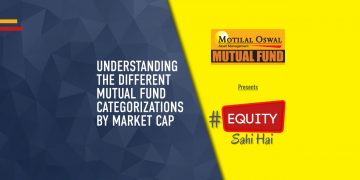Fund returns and volatility
While selecting a mutual fund for investment, an investor needs to understand the expected return from the fund compared to the benchmark and how it can be calculated. The investor also needs to understand how volatile the fund is compared to its benchmark and how it can be calculated. In this article, we will understand the above two parameters through the concepts of alpha and beta.
What is alpha in mutual fund?
Every mutual fund has an underlying benchmark. An index fund mirrors the benchmark, and an active fund aims to outperform the benchmark. In simple terms, alpha is the percentage outperformance of a mutual fund scheme compared to its benchmark.
For example, XYZ Mutual Fund Scheme has the Nifty 50 Index as the benchmark. The Nifty 50 Index went up by 12% in a particular year, and XYZ Mutual Fund Scheme went up by 15%. So, the alpha is the additional return of 3% generated by the XYZ Mutual Fund Scheme compared to its benchmark (Nifty 50 Index).
Alpha is not just about outperforming the benchmark in bull markets. It also entails the mutual fund scheme falling lower than the benchmark during market falls. For example, the Nifty 50 Index fell by 10% during a particular year, but XYZ Mutual Fund Scheme fell by 8%. So, even during a down year, ABC Mutual Fund Scheme has outperformed the benchmark (Nifty 50 Index) by 2%.
Alpha generation depends on the fund manager’s stock-picking ability. If the fund manager can identify the right companies and invest in them at the right valuation, she can generate significant alpha for investors.
What is beta in a mutual fund?
While investors will prefer their fund manager to generate alpha for them, they will prefer it comes with low volatility. Beta measures a mutual fund scheme’s volatility compared to its benchmark.
For example, if a mutual fund scheme has a beta of 1, it means the scheme’s performance will be in tandem with the benchmark index. So, if the benchmark index moves up by 5%, the scheme will also deliver 5% returns. If a mutual fund scheme has a beta of 2, it means if the benchmark index moves up by 5%, the scheme will deliver 10% returns. Conversely, if the benchmark index falls by 5%, the scheme’s net asset value (NAV) will fall by 10%.
Why are alpha and beta ratios important?
The alpha ratio is important for an investor because it tells them whether the particular fund can be expected to outperform the benchmark index. Based on alpha expectation, an investor can decide whether they should invest in an active fund with a particular index as an underlying.
For example, if an investor is comparing active large-cap funds, they need to check whether the funds have the potential to generate alpha over the Nifty 100 Index. Otherwise, the investor is better off investing in a Nifty 100 Index Fund with a low expense ratio.
The beta ratio is important for investors because it helps them decide whether they have the risk appetite to bear a particular mutual fund scheme’s volatility. Investors with a conservative risk profile can choose a mutual fund scheme with low beta, and those with an aggressive risk profile can choose a mutual fund with a high beta for investment.
How is risk measured?
Risk is the deviation from the expected outcome, which in our case is the expected returns from a mutual fund scheme. If a mutual fund scheme is expected to deliver 12% returns, there is a risk of underperformance (actual returns are lower than 12%) or even outperformance (actual returns are higher than 12%). While outperformance is certainly welcome, underperformance can jeopardize the achievement of investment goals.;
Investors can measure risk through standard deviation. Standard deviation measures the dispersion of the returns from average returns. For example, the standard deviation of returns of mid-cap funds is likely to be lower than small-cap funds.
How are risk-adjusted returns measured?
A risk-adjusted return involves the calculation of returns (profit) generated by a mutual fund scheme that factors in the amount (degree) of risk taken to achieve it. Calculation of the risk-adjusted return helps an investor understand whether the risk that they are taking is worth the expected return.
Assume that three investment products: Bitcoin, equity mutual funds, and Government securities, give you the same CAGR returns (hypothetical) in 3 years. Even though the returns are the same, the volatility in each asset class during the three years will be very different. Bitcoin will have the highest volatility, followed by the equity mutual fund and government securities.
In the above case, an investor has to decide whether it is worth taking the high risk in a particular asset class (Bitcoin) to generate the same return given by another asset class (equity mutual fund). If different investments with varying volatility give the same returns over a specified investment horizon, then the low-risk option (Government securities) will have a better risk-adjusted return than the high-risk option (equity mutual funds) or very high-risk option (Bitcoin).
Other ratios to quantify fund’s performance
Apart from alpha and beta, other ratios to quantify a fund’s performance include Sharpe Ratio. Sharpe Ratio calculates the excess return generated by a mutual fund scheme over the risk-free rate per volatility unit (using standard deviation).
For example, XYZ Mutual Fund Scheme has delivered 12% returns, and the risk-free rate (Government securities) is 6.5%. So, the fund has generated an excess return of 5.5%. The standard deviation of the fund is 2. Dividing the excess return (5.5%) by the standard deviation (2) gives a Sharpe Ratio of 2.75. The higher the Sharpe Ratio, the better.
The risk-adjusted returns can also be calculated using Treynor Ratio. The only difference is that the Sharpe Ratio uses standard deviation, and the Treynor Ratio uses the mutual fund’s beta for calculation. The higher the Treynor Ratio, the better.
Conclusion
Every investment product carries risk. While Government securities have the lowest risk, the returns may also be less. To generate high returns, you will need to take high risks. Your risk-taking ability will depend on your risk profile. Financial parameters like alpha, beta, Sharpe Ratio, Treynor Ratio, etc., help you evaluate mutual fund performance. They tell you the risk involved and the returns you can expect and thus help you make an informed decision.
Disclaimer: This blog has been issued on the basis of internal data, publicly available information and other sources believed to be reliable. The information contained in this document is for general purposes only and not a complete disclosure of every material fact. The information/data herein alone is not sufficient and shouldn’t be used for the development or implementation of an investment strategy. It should not be construed as investment advice to any party. All opinions, figures, estimates and data included in this blog are as on date. The blog does not warrant the completeness or accuracy of the information and disclaims all liabilities, losses and damages arising out of the use of this information. The statements contained herein may include statements of future expectations and other forward-looking statements that are based on our current views and assumptions and involve known and unknown risks and uncertainties that could cause actual results, performance or events to differ materially from those expressed or implied in such statements. Readers shall be fully responsible/liable for any decision taken on the basis of this article.
Mutual Fund investments are subject to market risks, read all scheme related documents carefully.








































